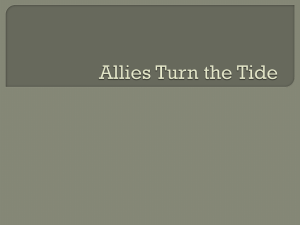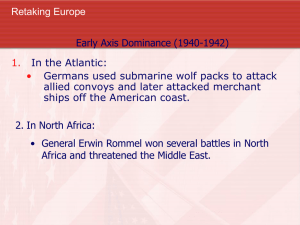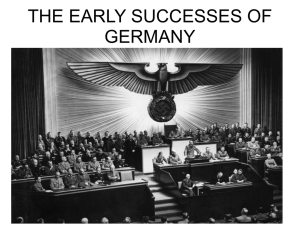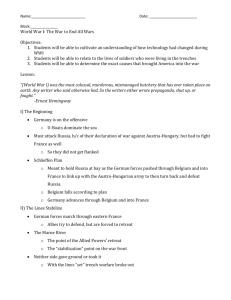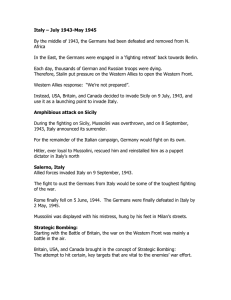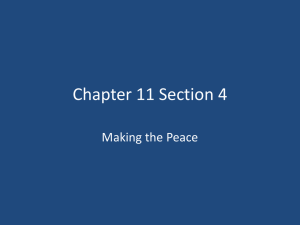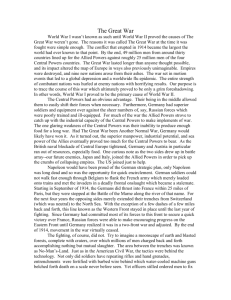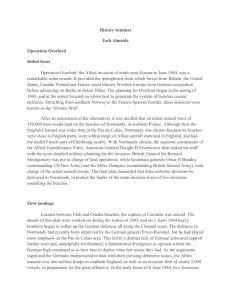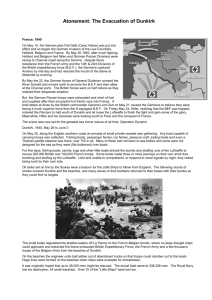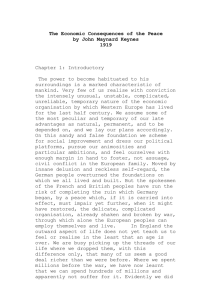File - History With Leeds
advertisement
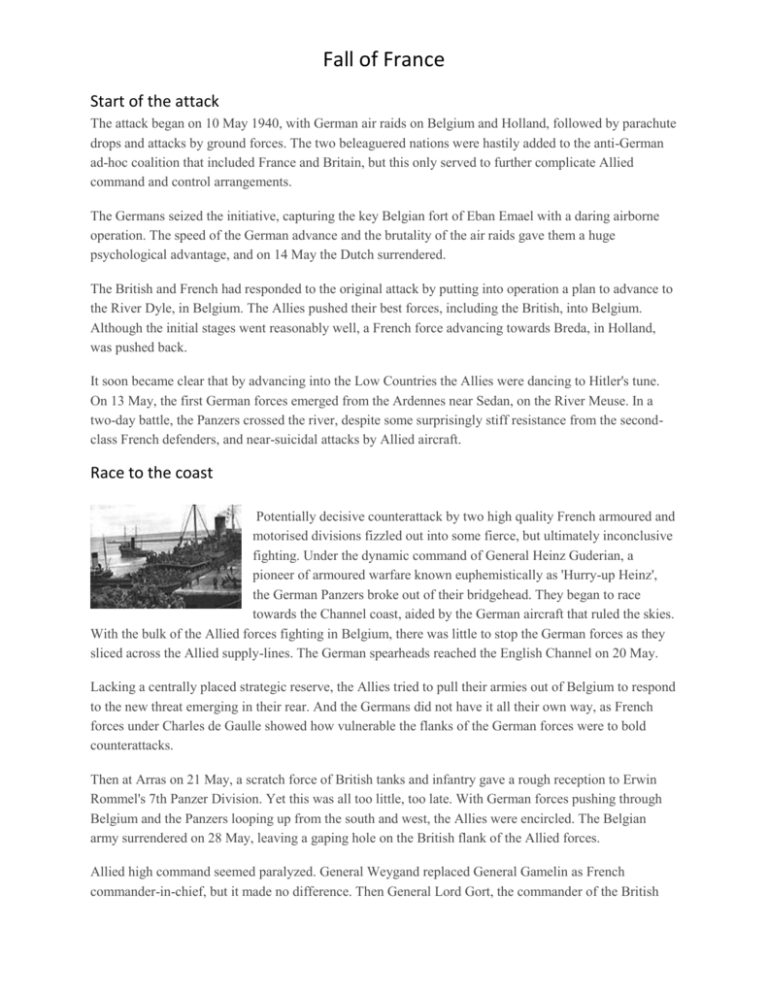
Fall of France Start of the attack The attack began on 10 May 1940, with German air raids on Belgium and Holland, followed by parachute drops and attacks by ground forces. The two beleaguered nations were hastily added to the anti-German ad-hoc coalition that included France and Britain, but this only served to further complicate Allied command and control arrangements. The Germans seized the initiative, capturing the key Belgian fort of Eban Emael with a daring airborne operation. The speed of the German advance and the brutality of the air raids gave them a huge psychological advantage, and on 14 May the Dutch surrendered. The British and French had responded to the original attack by putting into operation a plan to advance to the River Dyle, in Belgium. The Allies pushed their best forces, including the British, into Belgium. Although the initial stages went reasonably well, a French force advancing towards Breda, in Holland, was pushed back. It soon became clear that by advancing into the Low Countries the Allies were dancing to Hitler's tune. On 13 May, the first German forces emerged from the Ardennes near Sedan, on the River Meuse. In a two-day battle, the Panzers crossed the river, despite some surprisingly stiff resistance from the secondclass French defenders, and near-suicidal attacks by Allied aircraft. Race to the coast Potentially decisive counterattack by two high quality French armoured and motorised divisions fizzled out into some fierce, but ultimately inconclusive fighting. Under the dynamic command of General Heinz Guderian, a pioneer of armoured warfare known euphemistically as 'Hurry-up Heinz', the German Panzers broke out of their bridgehead. They began to race towards the Channel coast, aided by the German aircraft that ruled the skies. With the bulk of the Allied forces fighting in Belgium, there was little to stop the German forces as they sliced across the Allied supply-lines. The German spearheads reached the English Channel on 20 May. Lacking a centrally placed strategic reserve, the Allies tried to pull their armies out of Belgium to respond to the new threat emerging in their rear. And the Germans did not have it all their own way, as French forces under Charles de Gaulle showed how vulnerable the flanks of the German forces were to bold counterattacks. Then at Arras on 21 May, a scratch force of British tanks and infantry gave a rough reception to Erwin Rommel's 7th Panzer Division. Yet this was all too little, too late. With German forces pushing through Belgium and the Panzers looping up from the south and west, the Allies were encircled. The Belgian army surrendered on 28 May, leaving a gaping hole on the British flank of the Allied forces. Allied high command seemed paralyzed. General Weygand replaced General Gamelin as French commander-in-chief, but it made no difference. Then General Lord Gort, the commander of the British Fall of France Expeditionary Force (BEF), on 23/4 May took the morally courageous decision to abandon his role in a projected Anglo-French counterattack, and fell back on the Channel ports. The French, not surprisingly, regarded this as a betrayal, but Gort's decision saved the BEF. Between 26 May and 4 June, a hastily organised evacuation by sea, code-named Operation Dynamo, lifted 338,000 Allied troops from Dunkirk. That the German forces failed to press their attack on Dunkirk was largely thanks to grim defence of the Dunkirk perimeter by British and French troops, and the efforts of the much-depleted RAF. Although as Churchill, who had become Prime Minster on 10 May rightly commented, 'wars are not won by evacuation', Dynamo was a victory of incalculable importance for the BEF. The return of the troops, even without much of their equipment, gave Britain a basis on which to rebuild the Army, sheltering behind the Navy and the RAF. It also strengthened the credibility of Churchill's insistence that Britain would fight on, thus influencing the neutral USA at a time when American aid was vital. Second act The second act of the Battle of France began on 5 June, with the Germans striking southwards from the River Somme. Despite the fact that the French in many areas fought well, the Germans destroyed the Allied forces in the field in short order. The 51st Highland Division, which had not been grouped with the rest of the British army, was surrounded at St Valéry-en-Caux, and was forced to surrender on 12 June. The Germans launched a major offensive on Paris on 9 June, and on the 13th of June Paris was declared an open city, as the French government fled to Bordeaux. The first German troops entered the French capital on 14 June, little more than a month after the campaign began. There were still spasms of fighting. A fresh British force was sent to Normandy, only to be evacuated almost immediately. The Royal Navy carried out evacuations from ports down the French coast almost as far as the Spanish frontier. Meanwhile, the victorious Panzers raced in different directions across France, finishing off pockets of resistance, crossing the River Loire in the west on 17 June, and reaching the Swiss frontier a few days later. The end came with the surrender of France on 22 June. Hitler insisted on signing the document of capitulation in the same railway carriage used when Germany had surrendered in 1918. The humiliation of France was complete

